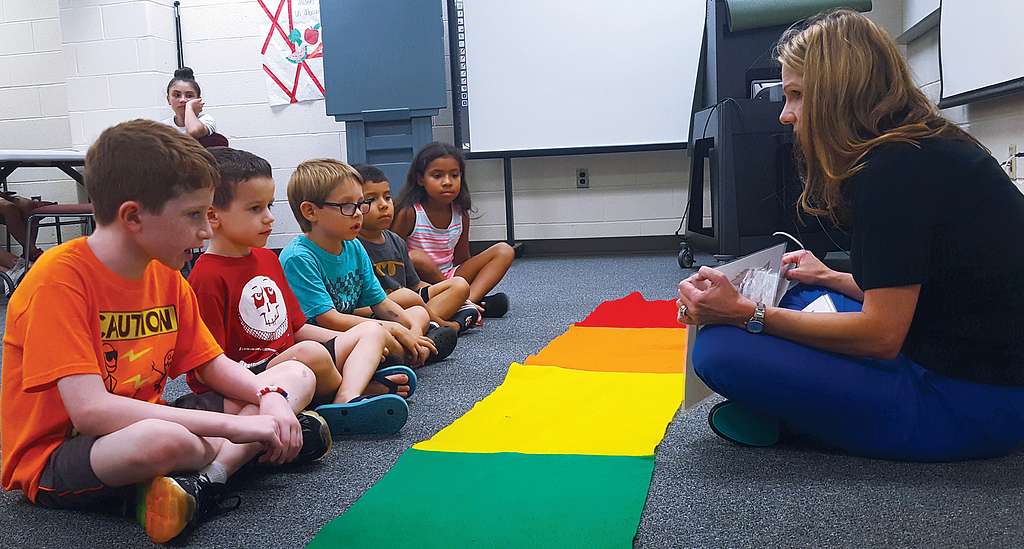Throughout the last 15 years, I have had to learn the art of being resilient. The art of taking challenges head-on (and yes, every corner I turn there’s a new one waiting for me). I have had the most incredible and nurturing help from many professionals that have helped me get to where I am, but a lot of resilience has been self-taught. It’s sometimes challenging to teach someone how to do something, through a textbook. Unfortunately/Fortunately, none of the professionals I’ve worked with (as far as I'm aware) have had to endure the challenges I’ve faced and therefore have not always been able to provide the support needed. I’m talking about resilience, something that is needed in schools, now more than ever.
Resilience is a crucial attribute for students to navigate the challenges of academic life effectively. However, schools in Australia face various obstacles when it comes to promoting resilience among students. In this blog, we will delve into the significant challenges faced by Australian schools and explore potential solutions to foster resilience.
1. Mental health and well-being
Mental health concerns are on the rise among students, posing a significant challenge to resilience-building efforts. Limited resources and inadequate support services exacerbate the issue. To address this, schools can collaborate with local health services to increase access to mental health professionals. On-site counselling services or partnerships for easy referrals can ensure students receive timely support. Additionally, implementing evidence-based well-being programs can promote positive mental health and resilience skills. By equipping staff and teachers with training programs focused on identifying signs of mental health issues and offering initial support, schools can create a supportive environment.
For information on how you can access mental health support for your school, visit Mental Health For Schools.
2. Bullying and peer pressure
Bullying remains a persistent challenge in schools, impacting students' confidence and resilience. To combat this issue, schools must establish comprehensive anti-bullying policies with clear guidelines and consequences. By promoting a positive school culture through awareness campaigns, assemblies, and classroom discussions, schools can foster respect, empathy, and inclusivity. Peer support programs, such as buddy systems or mentoring initiatives, provide opportunities for older students to guide and support younger ones. Enhancing supervision and reporting systems is crucial to promptly address bullying incidents, both in-person and online, and provide appropriate support to victims and perpetrators.
Visit REACHOUT for a great resource to help educate your students.
3. Academic pressure
The intense academic competition and high expectations place significant pressure on students, hindering their resilience. Schools can foster a balanced approach to education by prioritizing overall wellbeing alongside academic achievement. Promoting a growth mindset that emphasizes progress and effort over grades or test scores is key. Offering guidance on goal setting and time management equips students with valuable skills to manage their workload effectively. Schools can also establish support services such as tutoring programs, study groups, or mentoring initiatives to provide additional academic assistance to overwhelmed students.
4. Socioeconomic disparities
Socioeconomic factors significantly impact students' resilience, with schools in disadvantaged areas facing additional challenges. To address this issue, it is essential to allocate additional resources as much as you possibly can. Increased funding for educational materials, technology, extracurricular activities, and support programs can bridge the gap. Community engagement plays a vital role in fostering resilience among disadvantaged students. Partnerships with local organizations, businesses, and community members can provide mentoring programs, scholarships, and resources that support students from low-income backgrounds. Parent involvement is also crucial, as providing resources, workshops, and communication channels can empower families to support their children's education effectively.
Programs like the Gippsland Engaged Mentoring Program run by Workways, are great ways to give access to students for additional educational programs.
5. Lack of resilience-focused programs
To enhance resilience among students, schools must integrate resilience education into the curriculum. By embedding resilience-building activities and lessons into various subjects, students can learn problem-solving, emotional intelligence, and coping strategies. Providing professional development opportunities for teachers equips them with the necessary skills to incorporate resilience-building techniques into their teaching practices. Collaborating with external organizations such as community groups and mental health professionals can further enrich resilience-focused programs through workshops and guest speakers.
Our CRASHING INTO POTENTIAL (CIP) resilience programs are not only evidence-based but have been evaluated with tremendous success. Our research tells us that students who engage in our resilience programs will significantly increase their resilience.
6. Staff wellbeing and support
Resilience is not only crucial for students but also for teachers and staff members. Schools must create a supportive work environment by promoting work-life balance, offering opportunities for professional development, and encouraging open communication. Staff well-being programs, such as access to counselling services, wellness activities, and stress management resources, can contribute to a healthier and more resilient workforce. Peer support networks can be established, allowing staff members to connect, share experiences, and provide emotional support to one another. CIP also provides teacher training to not only teach teachers how to implement the program but to also build upon their own skills when faced with challenges.
Building resilience in school is essential to help students thrive in the face of challenges. By addressing the challenges I’ve mentioned above, schools can create supportive environments that foster resilience. Collaboration between schools, parents, communities, and relevant support services is crucial in implementing these solutions. Together, we can equip students with the necessary skills and support systems to overcome obstacles, thrive academically, and become resilient individuals capable of achieving their full potential.





